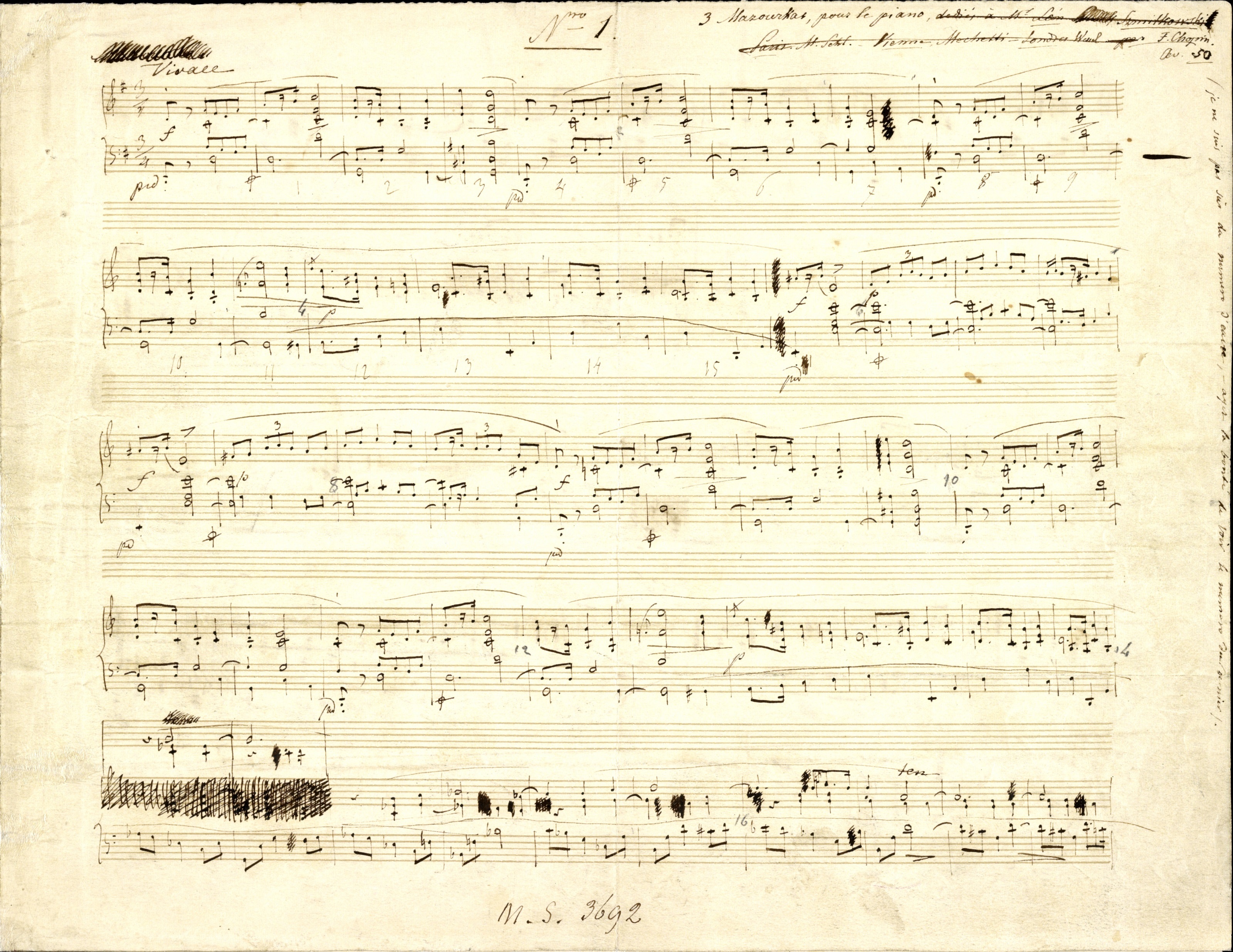



In A1 Chopin used two types of staccato signs to mark the first R.H. quaver in b. 1, 5, 9 and analog.: wedges in b. 1, 9, 25, 33 and 65 and dots in b. 5, 29 and 61 (in the L.H. there are dots only). Two types of marks are also in Afrag: wedges in b. 1, 5 and a dot in b. 9. The differentiation between the marks was not reproduced in FE (→EE), which was based on A1; it is also in GE that only dots are used. It is not always easy to differentiate between a dot and a wedge in Chopin's autographs; moreover, editors would often put dots even in the places where the manuscript clearly indicated a wedge, cf., e.g. the Etude in E Major, Op. 10 No. 11, b. 2-3 and analog. or the Concerto in F Minor, Op. 21, 3rd mov., b. 29-32. Therefore, one can assume that, same as in FE, in GE the use of dots only was also an inaccuracy of the engraver rather than Chopin's change of concept written down in [A2]. Due to the above reason, in the main text we keep the precise and consistent notation of A1, in which the beginnings of the eight-bar sentences are marked with wedges.
Major, Op. 10 No. 11, b. 2-3 and analog. or the Concerto in F Minor, Op. 21, 3rd mov., b. 29-32. Therefore, one can assume that, same as in FE, in GE the use of dots only was also an inaccuracy of the engraver rather than Chopin's change of concept written down in [A2]. Due to the above reason, in the main text we keep the precise and consistent notation of A1, in which the beginnings of the eight-bar sentences are marked with wedges.
Compare the passage in the sources »
category imprint: Differences between sources
issues: Inaccuracies in FE, Wedges
notation: Articulation, Accents, Hairpins

